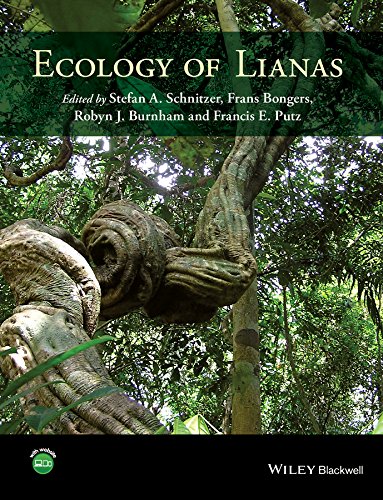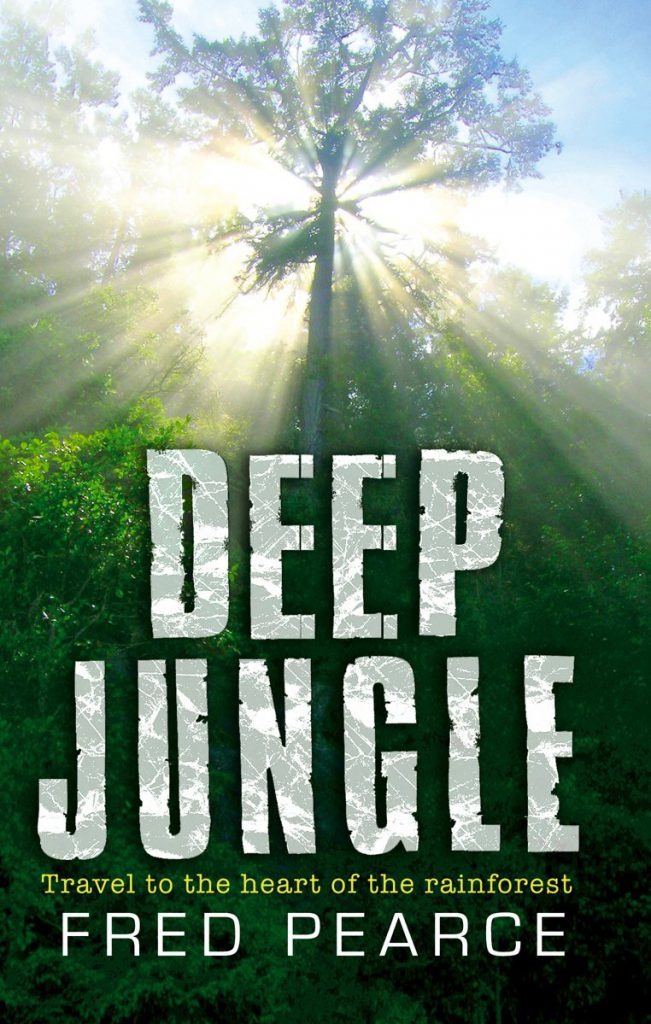
Deep Jungle: Journey To The Heart Of The Rainforest
The world’s tropical rainforests are home to an incredible number of plant species. The Amazon Rainforest alone contains overs 40,000 plant species!
The hot, humid climate in the world’s tropical regions provide ideal conditions for plant life.
However, there is a lot of competition for sunlight and nutrients. Plants have to adapt to find their place in the ecosystem.
More than two thirds of the world’s plant species are found in the tropical rainforests: plants that provide shelter and food for rainforest animals as well as taking part in the gas exchanges which provide much of the world’s oxygen supply.
Rainforest plants live in a warm humid environment that allows an enormous variation rare in more temperate climates: some like the orchids have beautiful flowers adapted to attract the profusion of forest insects.
Competition at ground level for light and food has lead to evolution of plants which live on the branches of other plants, or even strangle large trees to fight for survival.
The aerial plants often gather nourishment from the air itself using so-called ‘air roots’;. The humidity of the rainforest encourages such adaptations which would be impossible in most temperate forests with their much drier conditions.
Because of the incessant rain that beats down on the Amazon rainforest, soils are generally poor in nutrients. In such harsh environments, plants cannot afford the additional threat of being devoured by voracious insects. To defend themselves, they have evolved an amazing range of strategies and tools.
It is in the plants’ best interests to be tasteless, difficult to eat or just plain poisonous. So some plants have developed tough leaves, resins or latex outer coats that make them tough and able to resist many predators. Other plants produce leaves that are nutritionally poor, so insects have to invest a lot of time and effort in eating, which is not a worthwhile strategy for any species.
The most prevalent type of plant that is found in the tropical rainforest is the tree. Trees make up nearly two thirds of the rainforest plants that grow in the Amazon. There are larger trees, like the big leaf majogany, and it is actually 200 feet tall and can live to be 350 years old. It is deep in a reddish color, and it is used to make a lot of different types of furniture.
You will also find Brazil nut trees, which drop huge fruits around the beginning of each year. Their fruits are really large, and they can be produced only in Brazil.
It is also estimated that rainforests contain more than half of the fauna species on our planet. And yet deforestation of rainforests, especially of the Amazon, for human development and settlement threaten the millions of species that thrive in this unique world.
Here are just a small handful of the thousands of plant species in tropical rainforests.
Buttress Roots
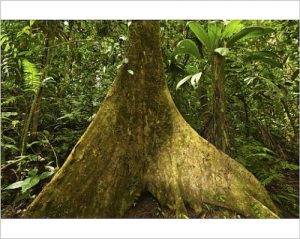
Photographic Print of Buttress root in jungle at Arenal Hanging Bridges where rainforest canopy is
The roots of Buttress Roots suffers from leaching and poor quality of nutrients. This is the reason that they grow laterally rather than vertically in search of nutrients and thus form a dense network on the surface of the ground. Since the roots are long and wide, the trees get larger area for water intake. The buttress roots therefore help trees to maintain stability when they reach towering heights and also during thunderstorms.
Bromeliads
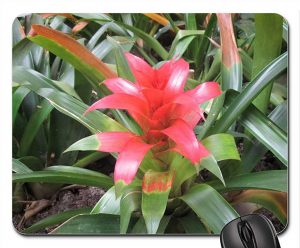
Bromeliad Red flower Mouse Pad, Mousepad (Flowers Mouse Pad)
Next, take a closer look at bromeliads. There are over 2500 different types of species of bromeliads that exist in the tropical rainforest. One of the most popular is the pineapple. Most of the bromeliads that are found are actually found in the stiff leaves that can overlap in the top of the rainforest, that help to hold in all of the rain and keep it in the environment. Most of these plants produce colorful flowers, including red, orange, blue and purple flowers.
Epiphytes
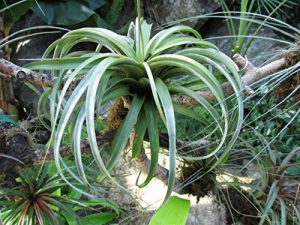
This type of plant is actually the type that doesn’t really ever touch soil. They are mainly found on the trees, and they get all of their nutrients from the trees. They include the orchids and ferns that are found in the upper canopy of the rainforest. They rely on insects and certain types of birds to pollinate and spread. Most of the orchids that grow in the rainforest will start out really tiny, and then they can grow to be as tall as about 14 feet, sometimes even more! Since they don’t use a root system, they have to get their nutrients from the fungi that grow at their roots. This is also how they get their water.
Bark
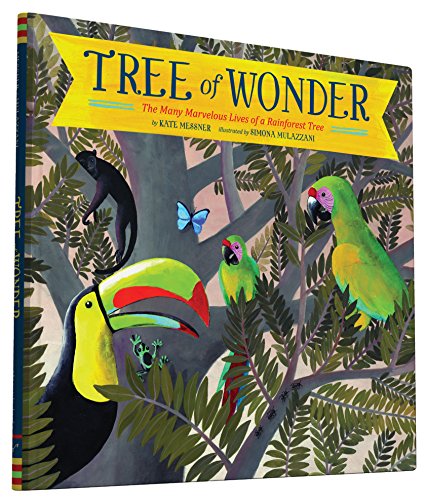
Tree of Wonder: The Many Marvelous Lives of a Rainforest Tree
A thick bark helps to limit moisture evaporation from the tree’s trunk. Since this is not a concern in the high humidity of tropical rainforests, most trees have a thin, smooth bark. The smoothness of the bark may also make it difficult for other plants to grow on their surface.
Lianas
You will find lianas in the rainforest. These are much like vines, and make up just about 8 percent of the total plant life in the tropical rainforest. These woody plants actually get their sunlight through various different techniques. They have roots, tendrils, hooks, thorns and twigs that can be used to climb up the trees in the rainforest so that they can get the sunlight that they need in order to thrive.
They work to help stabilize the trees of the rainforest as well. One of the most common types is the rattan vine, and it is collected from the rainforests in Southeast Asia to help make furniture. It has been used so much that it is now an endangered plant, meaning that you can’t really find it that much anymore.
Bengal Bamboo
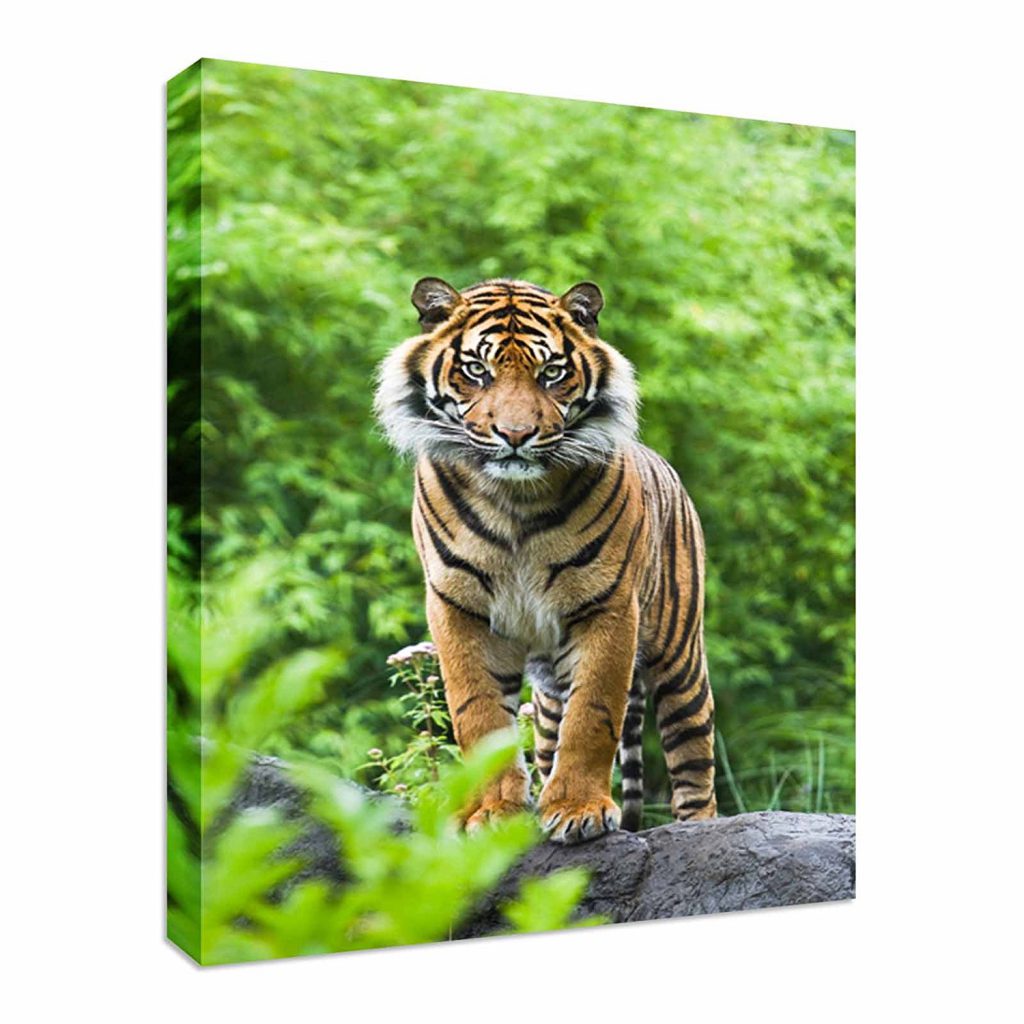
Bengal Bamboo grows extensively in the Southeast Asian Rainforests, especially on the islands of Indonesia. Growing in patches in the undergrowth of the forests, this green colored plant can grow up to a whopping eighty feet in height and three inches in diameter, and can live up to forty years. It adapts well to its environment and does well in both long periods of rain and sunlight.
Coconut Tree
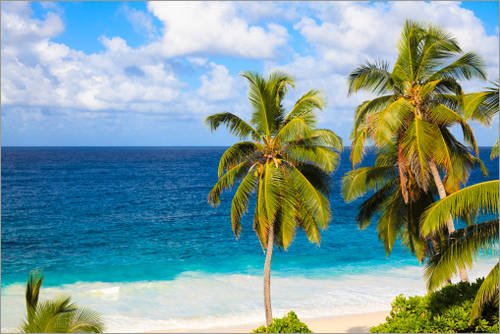
Perhaps the most “classic” tree that comes to mind when we think of jungle, be it a rainforest or a faraway Pacific Island, Coconut Trees are a symbol of the tropics. They can grow to be up to eighty feet in height and its leaves can measure to be more than fifteen feet. The main attractions of Coconut Trees are the shade they produce in the hot weather and their coconuts, which can number up to fifty per tree.
Bananas
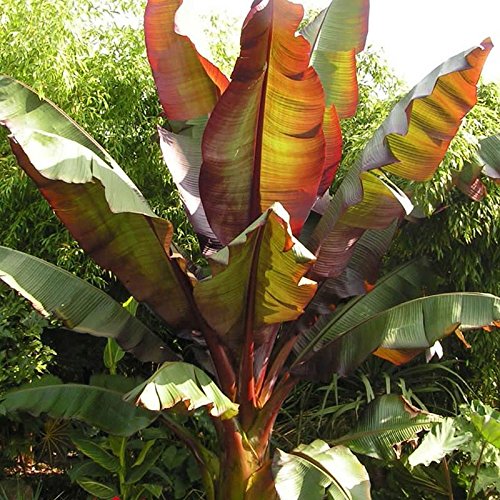
Ensete Red Banana plant 60cm+ tall
We all know what bananas are, that they grow on giant trees in the tropics and can take up to a year to fully ripen. Bananas are found all over in South America, Africa, and Asia.
Contrary to popular belief, banana plants are not trees but giant herbs, which reach their full height of between 10 and 20 feet after only a year. Every banana blossom develops into a fruit, which is ripe enough for consumption after about three or four months.
After producing fruit, the plants’ stems die off, and are replaced by new growth. The number of bananas produced by each plant varies. However, ten or more bananas growing together forms a “hand.” Banana stems have on average 150 “fingers” and weigh nearly 100 pounds.
The trunks of banana plants are not woody but composed of sheets of overlapping leaves wrapped tightly around one another, a design feature that enables them to conserve water. Because banana plants are approximately 93 percent water, even moderate winds can knock them down and destroy entire plantations.
Coffee
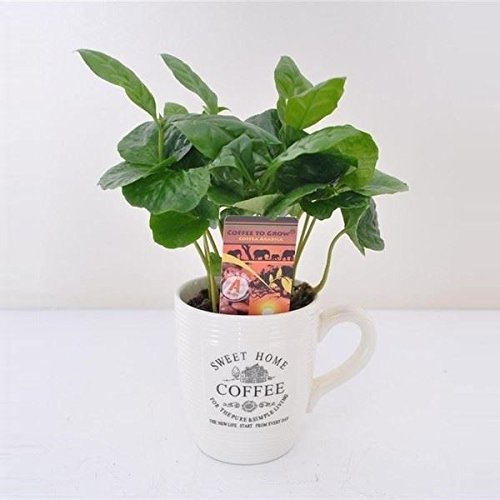
Coffee Arabica Plant in a Coffee Cup. Great Gift for Coffee Lovers
Yes, coffee also grows in the tropical rainforests. You just might have to thank the rainforest for the beverage that keeps you awake in the morning and the long work hours. Coffee has a life expectancy of one hundred years, eight years of that which is the plant growing into production.
Mangrove Trees
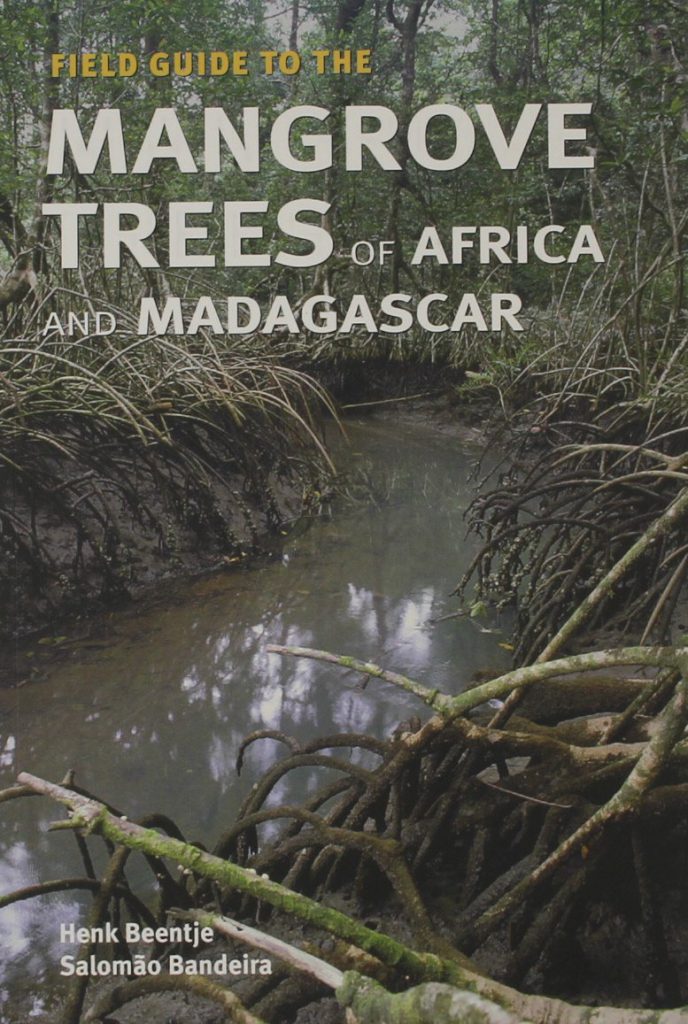
Field Guide to the Mangrove Trees of Africa and Madagascar
Mangrove trees are unique because they are found where rainforests meet Oceans. As a result, they are most commonly found on deltas and along coastlines. They are actually there to protect the coastline from the rainforest by collecting sedimentary rocks from the rivers to slow down the current of the water. Since mangroves are found along the Oceanic coasts, they can survive in extremely salty waters; however, mangrove forests are also unfortunately among the most threatened natural habitats on the Earth.
Orchids

How to Grow Orchids: A Beginner’s Guide to Growing Orchids
Not only are Orchids the largest family of plants in the world, they are also beautiful and appear in every color. The plants themselves are large, with the stems of the flowers growing to be nearly fifteen feet long and the petals thirty inches. They are found primarily in the rainforests in Central and South America.
Palms
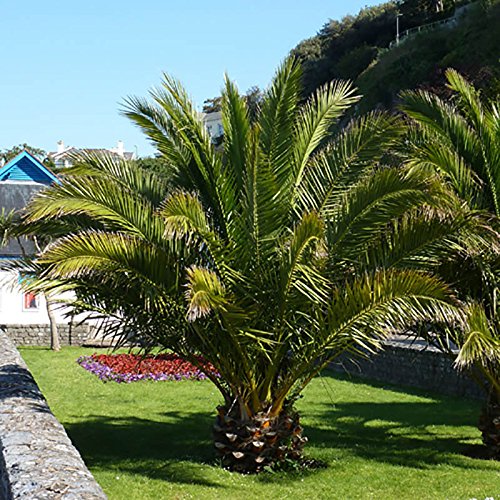
A majority of palms are easily identified by their distinct shape. Many have commercial value, for example to make brooms, hammocks, necklaces and string bags.
One palm species – Murumuru (or tucum) – is used for its oil and is said to have three times more Vitamin A than carrots as well as other nutrients. African oil palm is cultivated on an increasingly large scale, posing threats to native rainforests that are cleared in the process.
Vines
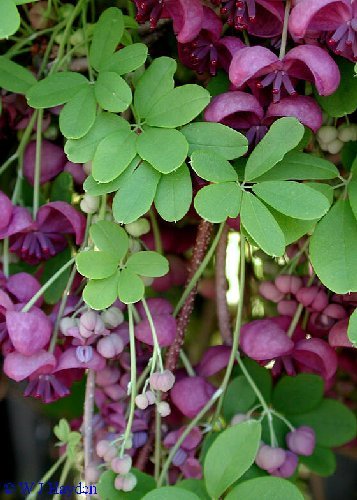
TROPICA – Chocolate Vine (Akebia quinata) – 10 Seeds – Tropical Magic
Vines are some of the elements that give rainforests their characteristic dense appearance. Apart from their structural role, they are essential food and “highways” for Amazon wildlife.
Vines encompass a variety of plants, including lianas that hang from the treetops, bole climbers, which ascend tree trunks and stranglers, which wrap themselves around trees and sometimes choke them. They are present in both disturbed areas exposed to light and in forest interiors, and regardless of soil type. Humans have long used vines for food, medicine, hallucinogens, poisons and construction materials.
Beyond beauty and interest, tropical rain forest plants contribute to modern medicine. Approximately 25% of all medicines on the market today come from plants found only in tropical rain forests. This includes treatments for a variety of cancers, malaria, multiple sclerosis, Parkinson’s disease, high blood pressure and more.
If you have any information,questions, or feedback you would like to include in this webpage.
Please email momo19@naturekingdoms.com or leave your comments below.
